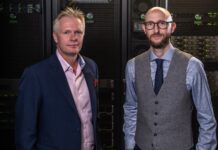
Randeep Somel explores an important issue pertaining to how climate targets will be reached.
This November, world leaders, climate activists, and business executives have been gathering in Sharm El-Sheikh for COP27, the UN’s annual Climate Change Conference. As with previous years, 2022’s conference has focused on implementing climate policies – with decarbonisation a key theme.
This is especially fitting as the conference is taking place seven years after the signing of the Paris Agreement – a legally binding international treaty that commits countries to limiting global warming to below 2 (and preferably below 1.5) degrees Celsius.
We’re now almost halfway between 2015 (when the Paris Agreement was signed) and 2030 – a key milestone for making sure we’re on track to meet these vital net-zero targets. Worryingly, however, the world is currently “significantly off-schedule” to meet the Paris Agreement targets, according to the UN Environment Programme. To ensure we get to net-zero, and prevent catastrophic global temperature rises, businesses across all sectors need to rapidly accelerate their emissions reductions.
Putting scope 3 emissions in the spotlight
One of the most critical and tangible actions that organisations can take to ‘keep 1.5 alive’ is to tackle their scope 3 – or indirect – emissions. This includes the emissions produced from within businesses’ own supply chains; by customers, investments, and even by employees commuting to their workplace.
Scope 3 emissions can account for over 70% of many businesses’ carbon footprint, which means that organisations – and the world – cannot reach net-zero without taking huge strides to reduce their indirect emissions. This can be done firstly by accurately measuring and reporting on them, and then following this up by taking swift action to mitigate them.
Reporting is crucial as you can only manage what you can measure. However, emissions reporting is not always straightforward, and organisations have often not been able to provide accurate scope 3 emissions data because it is outside their control, and therefore, not always easy to identify and measure.
Financial institutions such as banks, for example, have struggled to get access to accurate and detailed data for companies’ emissions reporting and instead have had to rely on inconsistent proxy data to compile key data points for scope 1, 2 and 3 emissions. This has meant the emissions data reported can be vastly different for the same companies. For example, one bank reported scope 3 emissions intensity for a corporate client of more than 7,000 tons of CO2 per €1 million in revenue, while another bank reported this number at zero for the same client.
Organisations of all sizes across various sectors are now facing growing pressure to more accurately report and significantly reduce their indirect emissions, from regulators, investors, and increasingly, climate-conscious customers. Earlier this year, the U.S. Securities and Exchange Commission (SEC) proposed new amendments to its rules that would require many US companies to submit data on their scope 3 emissions regularly. In the UK and EU, governments are expanding existing programmes that will place stricter demands on companies required to report their emissions data.
Enabling solutions: Shrinking your digital carbon footprint
In a modern world where storage infrastructure is increasingly prevalent, an organisation’s usage of technology and digital tools can make up a significant proportion of its carbon footprint. According to the International Energy Agency, data centres and data transmission networks are responsible for nearly 1% of all energy-related greenhouse gas (GHG) emissions globally.
Moreover, businesses can also have a negative environmental impact if they fail to properly dispose of their office technology, with equipment such as laptops, mobile phones and printers being upgraded more regularly than ever before. With electronic and electrical waste (e-waste) now the world’s fastest growing waste stream – with a staggering 50 million tonnes of e-waste produced every year – businesses also need to think about how they can reduce the amount of waste they create during their digital transformation efforts by considering re-use and recycling options when their equipment becomes obsolete.
This means that information and data storage companies have an opportunity to be part of the solution and take responsibility to assist their customers to cut emissions and minimise their environmental impact. In recent years, companies such as Iron Mountain have seen a growing number of customers across all areas of the business increasingly request data to be supplied about the portion of our scope 1 and 2 emissions, that they can in turn use for their own scope 3 reporting. Our extensive range of solutions such as our Asset Lifecycle Management (ALM) Environmental Benefits Report, our Green Shred Report, and the Iron Mountain Data Center (IMDC) Green Power Pass offers documentation to help customers accurately report on their scope 3 emissions, but also guides our customers in their understanding of how suppliers are working with them to meet their own environmental goals. Whether that’s by avoiding emissions through recycling or remarketing their electronic products or providing a data centre that’s covered by 100% renewable electricity, suppliers can show their sustainability credentials.
Organisations that play a key role in a company’s supply chain ecosystem can work with their customers to help them shrink their carbon footprint – and importantly, arm them with data and insights that ensures their progress can be accurately and transparently measured.

What’s next?
Following COP27, now more than ever, the information and data storage industry needs to work with each and every customer to meet ambitious net-zero targets and commit to driving down emissions across scopes, 1, 2 and, yes, 3. Ultimately, with less than eight years left until 2030 and the clock ticking on the countdown to the Paris Agreement’s 2050’s net-zero target, the responsibility is on businesses and governments to help the world accelerate the transition to a low carbon economy.
With technology and data playing a large and ever-growing part in most businesses’ scope 3 emissions, companies who subcontract their data storage and information management services to third parties must choose a provider that is committed to playing their part in keeping 1.5 alive and, critically, offer them the tools that enable progress to be made. Reporting should be about far more than keeping in line with the latest regulations. In the drive to cut emissions and mitigate environmental impact, it should be every company’s responsibility and priority.






